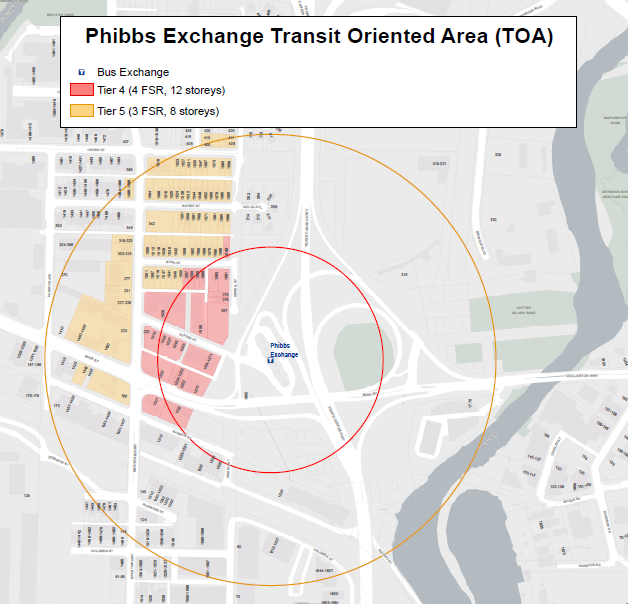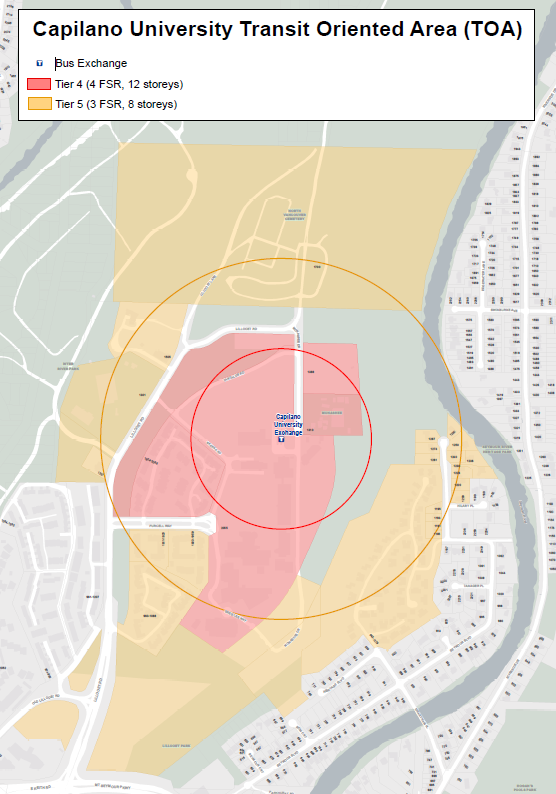North Vancouver’s New Transit-Oriented Areas (TOAs)
As the housing landscape continues to evolve across Metro Vancouver, North Vancouver is stepping into a new chapter - one shaped by Transit-Oriented Areas (TOAs). If you’ve been hearing the buzz but aren’t quite sure what it all means (or how it could affect real estate, traffic, or community life), here’s a breakdown.
What Are Transit-Oriented Areas (TOAs)?
TOAs are part of a new provincial push to encourage more housing near major transit hubs. The goal? Increase density where it makes the most sense - close to reliable public transportation - so people can live, work, and get around without depending heavily on cars.
The new legislation requires cities to pre-zone land around key transit stations for higher-density housing and to reduce or remove minimum parking requirements. This is part of B.C.’s broader strategy to tackle housing affordability and support sustainable urban growth.
North Vancouver’s Three TOA Zones
There are now three officially designated TOAs in North Vancouver:
1. Phibbs Exchange (District of North Vancouver)
This busy transit hub in the Lynn Creek area is already undergoing big changes, with rental buildings and mixed-use projects in the works. Under the TOA guidelines, the area within 400-800 metres of Phibbs will be pre-zoned for higher-density housing. Expect more multi-family buildings, fewer parking requirements, and an even stronger focus on walkability.

2. Capilano University Exchange (District of North Vancouver)
Not traditionally a hot spot for housing, this area is now being reimagined as a complete, transit-friendly community. The new TOA policies open the door for more rental and condo developments surrounding the university - potentially changing the feel of the neighbourhood over the next decade.

3. Lower Lonsdale / Lonsdale Quay (City of North Vancouver)
This one’s a bit different. Lower Lonsdale was already dense, vibrant, and highly walkable, with zoning that closely matched the new TOA guidelines. While it’s technically included, the TOA designation here won’t result in major policy shifts - but it does affirm the area’s importance in North Van’s long-term growth strategy.
What This Means for Residents, Buyers & Sellers
This is big news for housing supply in North Vancouver, but it’s also layered:
- More housing near transit is coming, especially in Lynn Creek and around CapU.
- Development timelines may speed up due to simplified zoning.
- Parking minimums will shrink, pushing for walkable, car-light lifestyles.
- Property values near transit hubs could rise as demand shifts toward convenience and walkability.
For buyers and investors, these areas are worth watching closely. For current homeowners, especially near Phibbs or CapU, it’s worth understanding how your neighborhood may change in the next few years.
Matt's Final Thought
North Vancouver’s new TOAs mark a shift toward smarter growth. For now, most of the action will be centered around Phibbs Exchange and CapU, while Lower Lonsdale continues to do what it’s already doing well. The full impact will unfold over time, but if you live, invest, or work in these areas, it’s worth staying in the loop.
🧭 Want to know how TOAs could affect your property or your buying plans? Let’s chat—I’m always happy to break it down over coffee.

